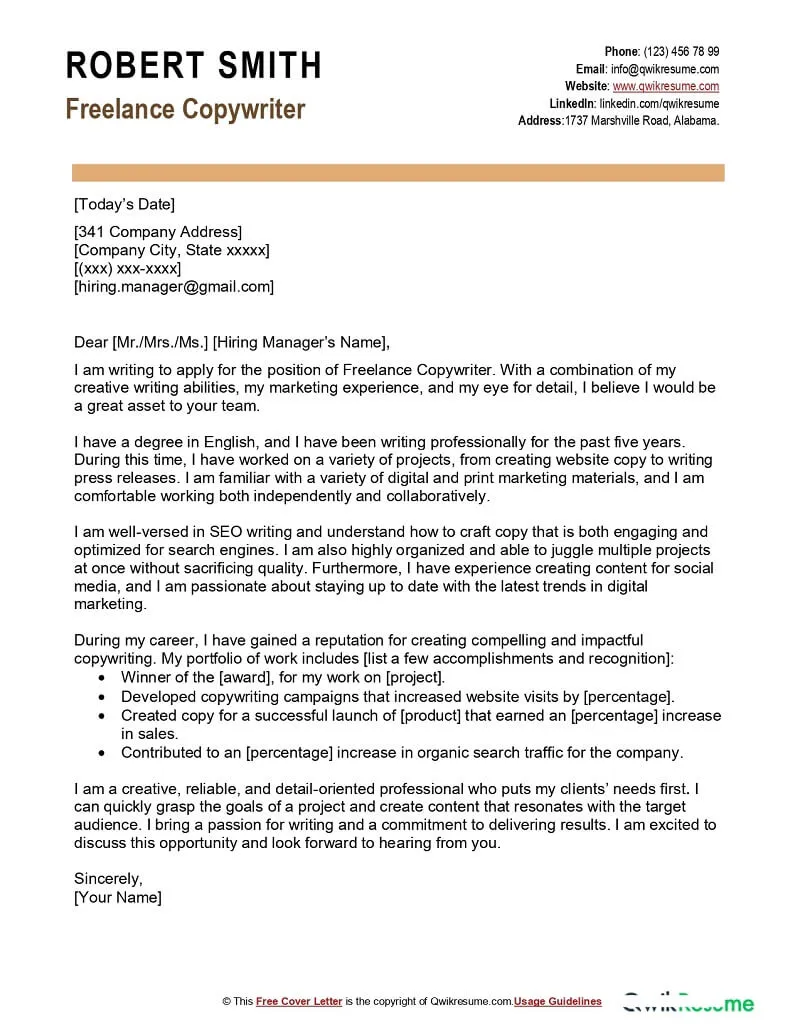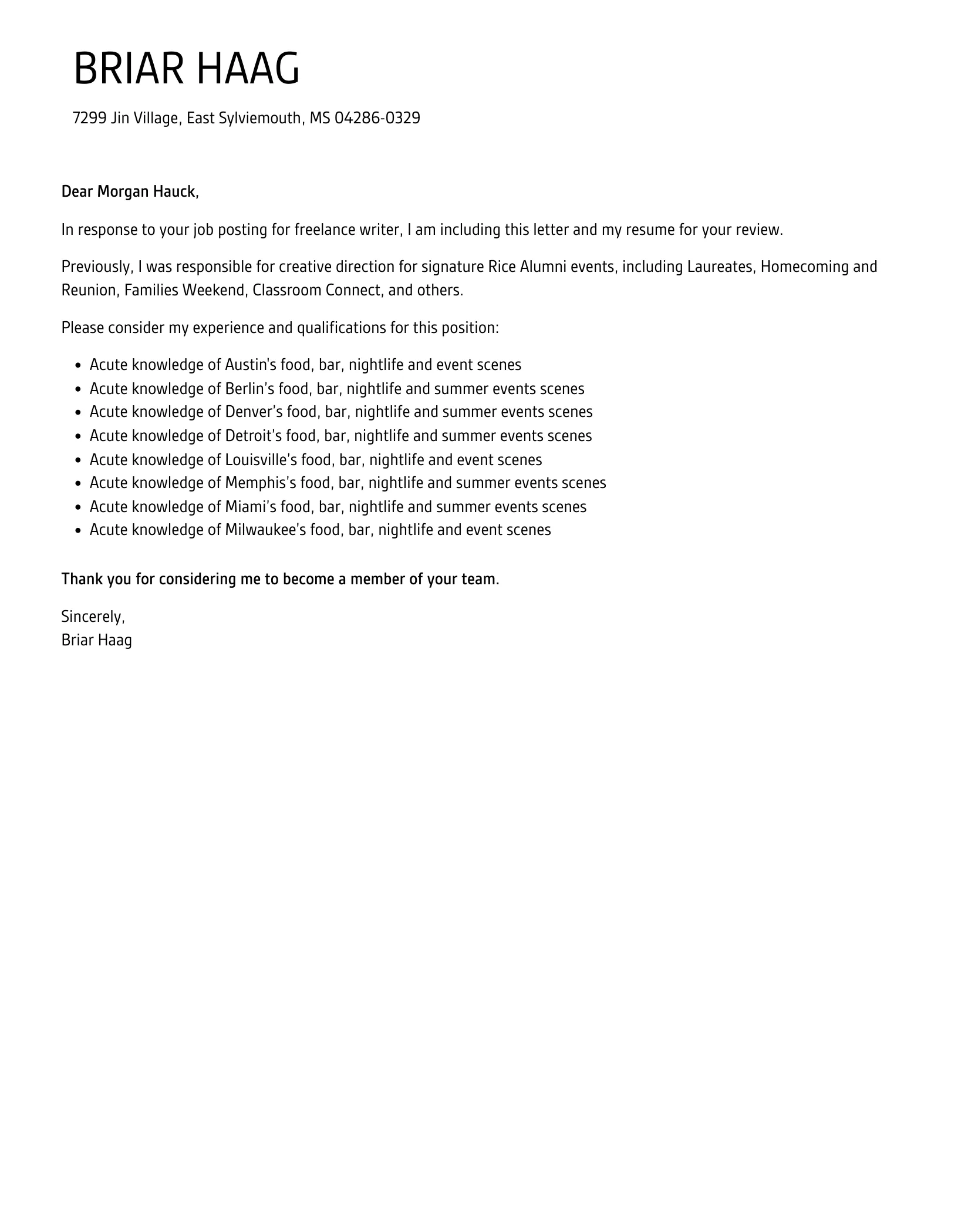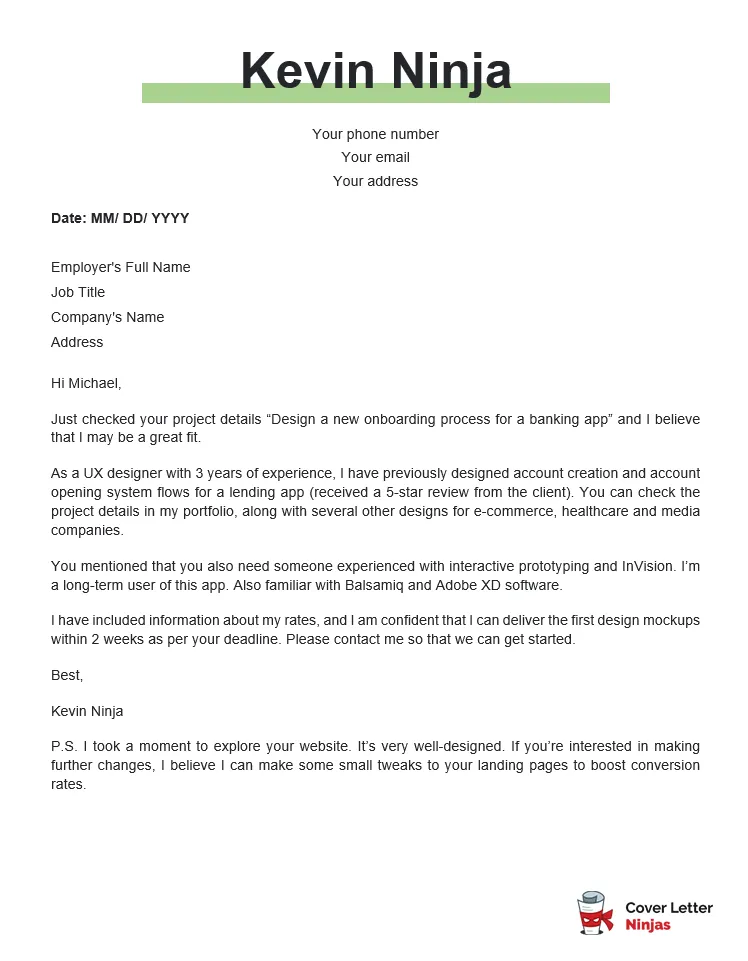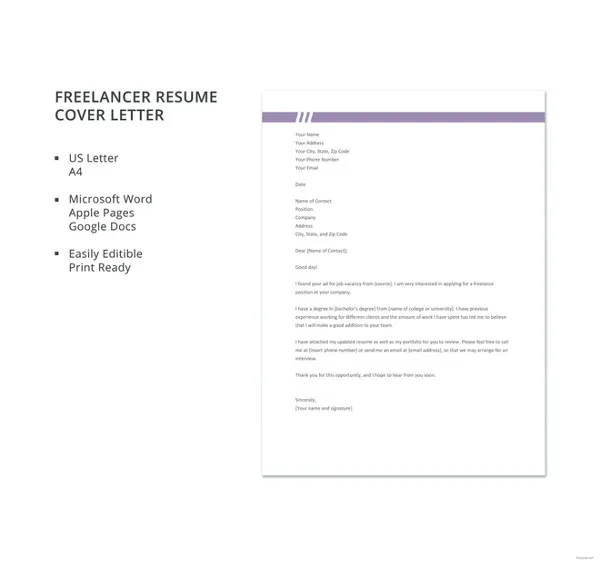What is a Freelance Cover Letter
A freelance cover letter is a crucial document that accompanies your resume when applying for freelance jobs. Unlike a resume, which provides a comprehensive overview of your skills and experience, a cover letter allows you to personalize your application and demonstrate your specific suitability for a particular project or role. It’s your opportunity to make a strong first impression, highlight your relevant qualifications, and showcase your personality and writing style. A well-crafted freelance cover letter can significantly increase your chances of landing an interview and ultimately, securing the freelance position you desire. It’s also a chance to set the tone for your future relationship with the client, highlighting your professionalism, communication skills, and enthusiasm for the project. A strong cover letter can differentiate you from other applicants.
Key Components of a Freelance Cover Letter
A compelling freelance cover letter typically includes several key components that work together to present you as the ideal candidate. Start with a professional header that includes your contact information and the date. Then, address the hiring manager or the specific person mentioned in the job posting. The body of your letter should start with a captivating opening that grabs the reader’s attention, followed by a concise overview of your skills and experience. Make sure to tailor each cover letter to the specific requirements of the job posting, demonstrating your understanding of the client’s needs and how you can meet them. End with a strong call to action, encouraging the client to contact you for an interview or further discussion. Finally, proofread your cover letter carefully before sending it to ensure that there are no errors or typos.
Highlighting Your Skills and Experience

Effectively highlighting your skills and experience is paramount in a freelance cover letter. The key is to focus on the skills and experiences that are most relevant to the specific job or project you’re applying for. Instead of simply listing your qualifications, provide specific examples of how you’ve used your skills to achieve positive results in previous projects. Quantify your accomplishments whenever possible. For instance, instead of saying ‘I wrote articles for various clients,’ you could say ‘I wrote over 50 articles for various clients, resulting in a 20% increase in their website traffic.’ This helps demonstrate the value you can bring to the prospective client. Tailor your skills section to align with the job description using keywords from the posting to improve your chances of success. This will grab the employer’s attention, and make you stand out from other freelancers.
Structuring Your Freelance Cover Letter
The structure of your freelance cover letter is just as important as its content. A well-structured cover letter is easy to read, professional, and highlights your key strengths effectively. Start with a clear and concise introduction, immediately stating the position you’re applying for and how you found the job posting. The body of the letter should then elaborate on your skills and experience, referencing specific examples and achievements that showcase your ability to deliver results. Be sure to maintain a professional tone, and avoid excessive jargon or overly casual language. Organize your thoughts logically, using paragraphs to separate distinct ideas. Finally, end with a strong call to action, requesting an interview or expressing your enthusiasm for the project, and make sure to proofread it very well.
Crafting a Compelling Opening
Your opening paragraph is your chance to grab the reader’s attention and make a strong first impression. Avoid generic phrases like ‘I am writing to express my interest…’ Instead, start with something that directly addresses the client’s needs or shows your enthusiasm for the project. If possible, mention something specific from the job posting that caught your eye, or briefly highlight a relevant skill or accomplishment. For example, you could start with ‘I was thrilled to see your posting for a freelance writer specializing in [specific niche].’ or ‘Based on your description of [project goals], I am confident that my experience in [relevant skill] can help you achieve [desired outcome].’ Keep your opening brief and to the point, setting the stage for the rest of your letter.
Showcasing Your Relevant Experience

In the body of your freelance cover letter, provide specific examples of how your past experience aligns with the job requirements. Instead of simply listing your previous roles, focus on the accomplishments and results you achieved in each position. Use the STAR method (Situation, Task, Action, Result) to provide a clear and concise narrative of your contributions. For instance, describe the situation you faced, the task you were assigned, the actions you took, and the positive results you delivered. When presenting your experience, always highlight the skills and knowledge that are most relevant to the specific project or role. If the job posting emphasizes the need for a particular software, be sure to mention your experience with it. The more relevant your experience, the more likely you are to make a strong case for why you are the ideal candidate.
Demonstrating Your Understanding of the Project
A key differentiator in a freelance cover letter is demonstrating your understanding of the client’s project. Take the time to carefully read the job description and research the client’s business or website. Show that you understand their goals, target audience, and the specific requirements of the project. In your cover letter, address the client’s needs directly, explaining how your skills and experience can help them achieve their desired outcomes. Tailor your language to reflect your knowledge of their industry and the specific project. By demonstrating that you have a clear understanding of the project’s objectives, you show your commitment and that you are prepared to contribute to its success. This will set you apart from other applicants and increase your chances of landing the job.
Including a Strong Call to Action
End your freelance cover letter with a strong call to action. This is your opportunity to encourage the client to take the next step and contact you for an interview or further discussion. Make your call to action clear and specific. For example, you could write, ‘I would welcome the opportunity to discuss how my skills and experience can contribute to your project. Please feel free to contact me at your convenience.’ Alternatively, you might say, ‘I am eager to learn more about this project. I can be reached by email or phone at [your contact information].’ Avoid generic phrases like ‘Thank you for your time.’ Instead, express your enthusiasm and interest in the opportunity. A well-crafted call to action can significantly increase your chances of moving forward in the hiring process.
Freelance Cover Letter Sample Template

Creating a freelance cover letter from scratch can seem daunting, so using a template can save time and ensure you include all the necessary elements. Many online resources offer cover letter templates tailored specifically for freelance applications. When using a template, be sure to customize it to fit the specific job and your individual qualifications. Do not just fill in the blanks; instead, use the template as a guide to write a unique and compelling cover letter. Adapt the template to showcase your relevant skills and experiences, and avoid using generic language. This will give you a starting point to write a professional cover letter.
Customizing Your Cover Letter for Each Application
One of the most critical aspects of writing a successful freelance cover letter is customizing it for each application. Avoid using a generic cover letter that you send out to every client. Instead, carefully review each job posting and tailor your cover letter to address the specific requirements and needs of the client. Highlight the skills and experiences that are most relevant to the project and demonstrate how you can help them achieve their desired outcomes. Show that you have taken the time to understand their business and the specific challenges they face. By personalizing your cover letter, you demonstrate your genuine interest in the project and your commitment to delivering high-quality work. This significantly improves your chances of getting noticed by the client.
Proofreading and Formatting Your Cover Letter
Before you send your freelance cover letter, carefully proofread it for any errors or typos. Spelling and grammatical errors can undermine your professionalism and make you appear careless. Use a spell checker and grammar checker to catch any mistakes. However, it is also essential to read your cover letter aloud, as this can help you identify awkward phrasing or other issues. Ensure that your cover letter is well-formatted and easy to read. Use a clear and professional font, such as Arial or Times New Roman, and use ample spacing between paragraphs. Make sure to use bullet points and short sentences. A well-formatted and error-free cover letter will make a positive impression on potential clients and increase your chances of landing the job.
In conclusion, a well-crafted freelance cover letter is essential for securing freelance projects. By following these guidelines, you can create a cover letter that showcases your skills, experience, and personality, increasing your chances of landing your next freelance opportunity. Remember to tailor your cover letter to each specific job, highlight your relevant qualifications, and demonstrate your understanding of the project’s needs. Good luck with your freelance applications!
